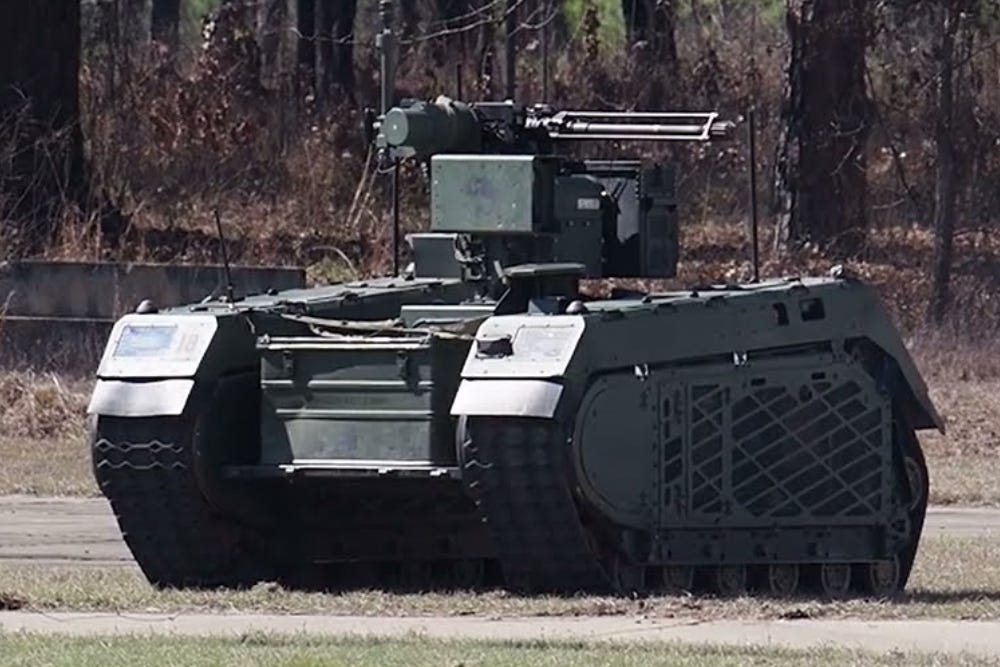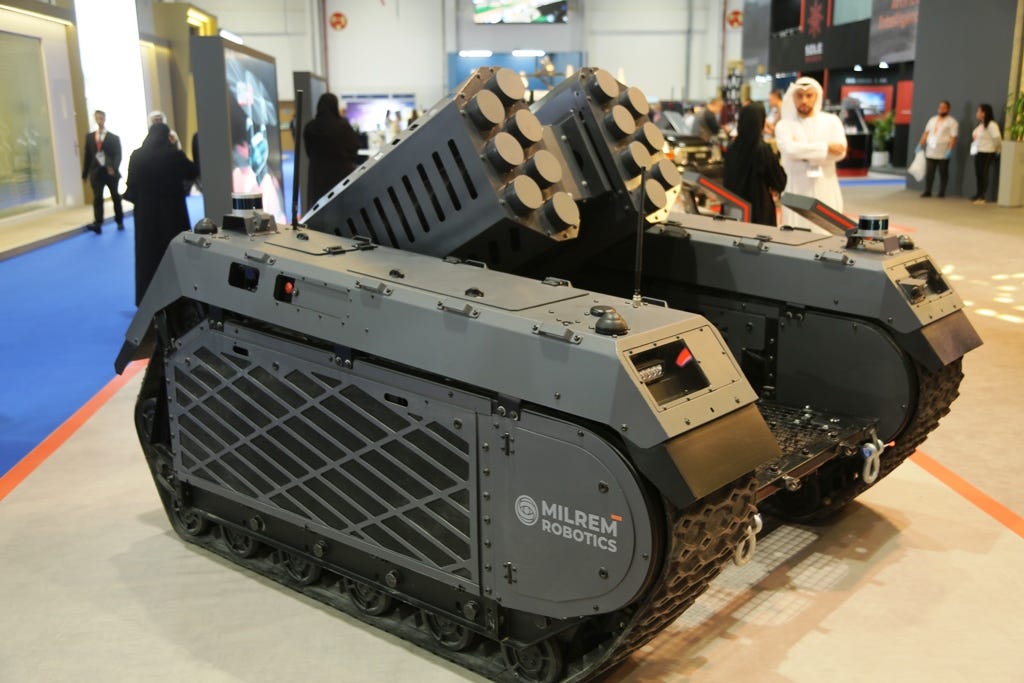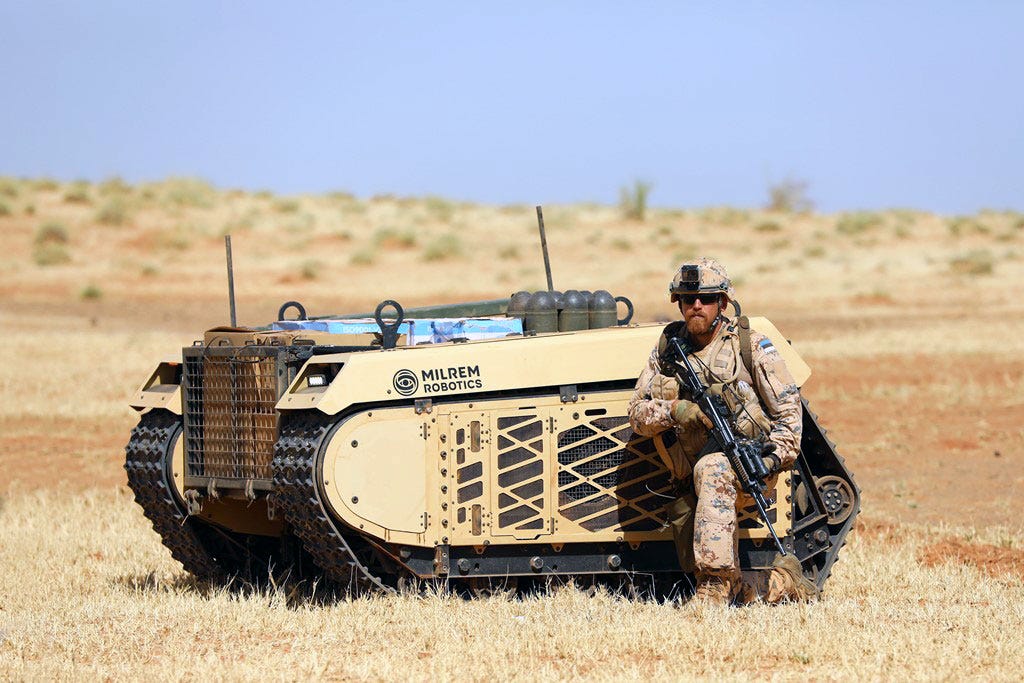150 Unmanned Ground Vehicles Head to Ukraine
That is scale, deliberately built for urgency.
Estonia’s Milrem Robotics, working with Dutch partners, has signed up to deliver more than 150 THeMIS unmanned ground vehicles to Ukraine, funded and coordinated by the Netherlands and assembled at a newly created line in Born by VDL Defentec.
That is scale, deliberately built for urgency. It supplements roughly 15 THeMIS already in service with Ukrainian units, and Milrem will train operators and maintainers, so these machines do not become glorified yard ornaments.
If you squint, that headline reads like a new chapter in how wars get fought: not just with missiles and tanks, but with logistics bots, scout tractors, and machine-operated pack mules that do the heavy lifting so humans don’t have to.
Let’s walk through why this matters, how Ukraine is already using THeMIS on the ground, and why Europe building its own assembly line is an unstated geopolitical message in steel and tracks.
The THeMIS is a tracked, hybrid-electric unmanned platform conceived as a modular workhorse.
Sort of like a cross between a small tractor and a smartphone: solid mobility and a configurable payload bay that accepts everything from logistics trays and fuel bladders to remote weapon stations and sensors.
It’s built to haul, to watch, and to act as a beast of burden for infantry. I wish we would have had this even ten years ago, then we wouldn’t have had to hump our heavy machine gun ammo across all of Christendom.
Its value on a muddy, chaotic frontline seems obvious: tracks that give it cross-country mobility, a hybrid drive for extended range and quieter operation, and modular rails and power interfaces so a unit can swap a cargo deck for a sensor mast or a turret without needing a whole new vehicle.
That flexibility is exactly why militaries like it. One chassis, many jobs.
Why 150 Matters
The American way of warfighting evolved throughout the 20th Century to focus on smaller numbers and high precision kill chains.
But the Ukraine War was a slap across the face: numbers still matter. This is true whether the adversary is Russia or China. Both can bring to bear massive volume of fire, although Russia’s capabilities have been greatly diminished thanks to Ukraine.
Today, numbers are operational geometry. Fifty THeMIS can support a brigade in a logistics tempo that replaces slow, exposed truck convoys.
One hundred and fifty can change how entire divisions move supplies, clear routes, and recover damaged kit. Scale flips THeMIS from a novelty into an operational layer.
Why build them in the Netherlands?
Speed and sovereignty. Establishing a scalable final assembly line at VDL’s Born plant is a political and practical shortcut. It means parts flow from trusted suppliers, quality control sits in Europe, and production can ramp if more machines are suddenly required.
How Ukrainian Units Are Using THeMIS Today, Right Now
Ukraine didn’t wait for doctrine committees to convene.
The 15 THeMIS already in service have been used in ways that look like common sense when you see the front up close.
Logistics first. These robots haul ammunition, battery packs, food, and wounded across interdicted lanes while reducing the number of vulnerable resupply convoys. That’s priceless... Especially when CASEVAC and MEDIVAC are practically dead thanks to constant drone overwatch.
Reconnaissance is another core role.
Put a mast with EO/IR cameras and a jammer-resistant datalink on a THeMIS, and you have a quiet scout that can loiter at the edge of a wood line or peer into a ravine without risking a human spotter.
Add a small turret like the Burya grenade launcher, and the same chassis can deliver direct fire, or remote suppressive support during an infantry maneuver.
There’s also experimentation in “mothership” roles: THeMIS carrying and launching smaller UAVs or acting as a mobile communications relay to keep situational awareness flowing despite contested spectrum.
That is where the modularity pays off: a kit that was a logistics deck on Monday can be a sensor node on Thursday.
Why do commanders love this idea? Because robots shift the risk equation. A damaged THeMIS is not a dead soldier. Re-supply by unmanned vehicles reduces choke points and keeps ammunition flowing, which in turn keeps operational tempo high.
In an attrition war, logistics and ops tempo dictate who wins. Also, robots can do boring, dangerous tasks that used to fall on human infantry. We used to call it being “volun-told” rather than volunteer to do a task: hauling ammo, clearing mines, resupply in shelled zones.
There’s a psychological edge too.
When every trench has a rover rolling past, small-unit commanders can take more tactical risks. They can push a screen forward knowing supplies and casualty evacuation are less fragile. That agility has been Ukraine’s secret sauce from the start.
The Limits, and the Ways Adversaries Fight Back
THeMIS is not a magic carpet. It has vulnerabilities.
Tracks get torn up by jagged terrain. Communications can be jammed or spoofed. Batteries and control electronics are susceptible to artillery or directed-energy effects, and a tracked robot is still a physical target for artillery and loitering munitions.
In short, the machines lower some risks while introducing new ones.
Ukraine’s front is an electronic war as much as a kinetic one. UGVs require robust, secure datalinks, resilient navigation that survives GPS denial, and fallback behaviors when comms drop.
Training operators to manage intermittent control and to make safe, non-fragile decisions when cut off is a real challenge.
Milrem’s commitment to training is not a PR checkbox, it is the point where the hardware stops being a toy and starts being a tool.
Operationally, these vehicles accelerate a doctrinal shift.
You will start to see new tactics where robots are integrated into combined-arms teams: an infantry platoon plus a THeMIS logistics pair, a recon THeMIS on the flank, and a heavier robot back at the rally point. That changes how missions are planned.
Planners have to think in multi-domain layers: who feeds the robot, who services it, how is it camouflaged, and who covers it if it breaks down.
And because THeMIS is modular, it encourages iterative upgrades. Want a better sensor? Swap it. Want a heavier weapon? Refit the mounting. That “upgrade in the field” model mirrors the Ukrainian habit of rapid iteration: test, fail, adapt, deploy an improved kit in days rather than years.
This deal is also political theatre.
Europe is sending a message that its defense industrial base can be mobilized quickly and that assistance to Ukraine is not only military but also economic. Building an assembly line in the Netherlands strengthens European autonomy, and it’s also a middle finger to Russia showing that more capability can be produced and shipped without US factories being sole gatekeepers.
There is also a long-term angle. Training Ukrainian maintainers in Europe builds future capacity inside Ukraine.
That matters for post-war reconstruction and for keeping supply, repair, and upgrade cycles close to the battlefield rather than dependent on fragile foreign logistics chains.
What Happens Next: Integration, Iteration, and Inevitable Opposition
Expect the first deliveries to be followed by rapid experimentation. Units will test turret integrations like the Burya grenade launcher, scale-up drone-launching decks, and tune comms resilience.
Milrem and VDL will collect lessons, iterate production kits, and likely supply spare parts, repair modules, and software patches.
The battlefield will do the rest: it will break the imperfect parts, and those who learn fastest will improve the design.
At the same time, Russians and their suppliers will probe the weak points. They will attempt to jam, to bait, and to hammer the logistics nodes that feed these robots. That will force Ukraine to harden communications, diversify power feeds, and possibly keep human crews in close support so the robots are not orphaned when contested space gets fiercer.
One hundred and fifty THeMIS bots will not replace soldiers.
They will not win a war on their own. What they will do is change the arithmetic of modern combat in certain forward-deployed areas: reduce convoy footprints, increase resupply rates, provide persistent sensing, and give commanders tactical options they did not have before.
They hand Ukraine another tool that, combined with drones, Western precision weapons, and Ukrainian grit, makes a much harder problem for Russian forces.
This is a concrete, scalable way of turning Western industrial capacity into battlefield advantage, quickly.
It channels money into hardware that directly reduces human risk, and it builds European production muscle in the process. That is the meaningful metric of assistance in 2025: rapid, practical, and adaptable.
In true Ukrainian fashion, they will take these robots, mount the things they need, and teach them to work the way the fighting does.
And if you believe the long view, that is where revolutions happen; not by a single grand machine, but by lots of small tools, used well, by people who refuse to be defeated.
Слава Україні!






The observation that “scale built for urgency” defines the THeMIS initiative highlights the same dialectic Clausewitz described: war as “a remarkable trinity” between
1. violence and emotion (people),
2. chance and probability (military forces), and
3. political purpose (government).
Robotic warfare redistributes weight within that trinity by reducing emotional exposure but elevating the technical and organizational friction of control.
In short, I feel that the Ukraine THeMIS project demonstrates that while the character of war evolves with robotics, autonomy, and industrial scale, the nature of war, the human, political struggle animated by will, friction, and danger remains immutable.
nice work on the article too as always.
150 is good, but 1500 with 150 replacements a week would be better.
The battle of Lyptsi late last year showed that UGVs can, in fact, replace infantry is assaulting defended positions.
This is how Ukraine can liberate territory without the sorts of casualties Russia has suffered to enslave it.